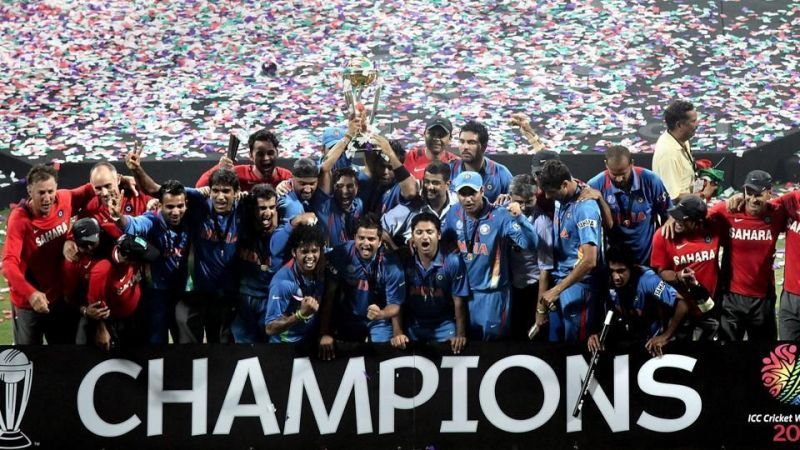
ICC World Cup 2019: Why a 10-team tournament does not augur well for the popularity of the sport
With as many as 2.5 billion fans, cricket is the second most popular sport in the world. Though the number looks quite big on paper, when looked at from a geographical point of view, it is restricted to the Indian subcontinent in Asia, the United Kingdom, the Australian Continent, the Caribbean islands and a few pockets of Africa that include South Africa, Zimbabwe and Kenya.
A major part of the world does not know how cricket is played, nor does it understand the buzz surrounding the sport.

Against such a backdrop, one would expect the International Cricket Council (ICC) to take every possible measure to popularize the game. However, the principal cricketing body of the world went in the polar opposite direction by trimming the number of participating teams to 10, taking the sport more than two decades back (the last time the number of participating teams was so few in number was in the 1992 World Cup).
At a time when everyone was excited about the possibility of the associate nations playing the Test-playing nations more frequently, this decision from ICC was a shocker.
In fact, Sachin Tendulkar strongly batted in favor of an increase in the number of teams in the World Cup after seeing the show that the Associate Nations put up in the 2015 edition. Ireland and Zimbabwe were always in the hunt to make it to the quarterfinals of the tournament, whereas Bangladesh, who are no more merely giant-killers, defeated England in the league stages to qualify for the quarterfinals.
The 2007 World Cup was probably the best World Cup played so far from a participation point of view. A total of 16 teams got to play in the tourney, which again decreased to 14 in 2011 and 2015. The 2007 edition was a FIFA-esque tournament with each group having four teams, wherein the top two teams progressed to the subsequent rounds.
Here’s the thing about making more teams playing in the World Cup. Say we increase the number of playing teams to 16, or 24 (as Tendulkar once requested the ICC). More teams mean more groups, but smaller ones. It's like in a FIFA World Cup, where you have 8 groups of 4 teams each.
When you have less teams in a group, what happens is that once a Test-playing nation is upset by one of the minnows, there is no room to recover. One shock defeat, and the World Cup is as good as over for a major team.
India and Pakistan got eliminated in the group stages of the 2007 World Cup in the exact way mentioned above. But these two sides getting eliminated in such an embarrassing fashion became the talking point of the tournament, and the very format of the tournament came under the scanner.
The TRPs and attendance at the host stadia consequently dwindled due to the exit of two major teams, particularly India, and this resulted in lower than expected revenues for the ICC as well.
Possibly as a matter of precaution, the ICC decided to revise the format for 2011. They came up with a format of two groups consisting of seven teams each, so that all major teams had enough chances to bounce back if they received a shock defeat at the hands of one of the lower ranked teams.
Though there were some shock defeats in this tournament too, the format ensured that all the major teams progressed to the quarterfinals.
But even this format was not enough to prevent England from bowing out of the tournament in the group stages of the 2015 World Cup.
As a last resort, the ICC completely obliterated the surprise factor of the tournament by limiting the number of teams to 10. They made it a round-robin tournament instead of the more exciting knockout-themed event.
The intention of the ICC may not have been to stagnate the worldwide popularity of cricket, but that is exactly what might happen in the aftermath of the decision. Even in India, football is well on its way to becoming a major alternative to cricket as far as sporting entertainment is concerned.
As a sport enthusiast who watches both cricket and football, I have always been amazed by the beauty of the FIFA World Cup. There are surprises in almost each of the eight groups, and it is always an exciting prospect to see giants like Germany, Spain and Brazil eliminated by lower-ranked and underrated teams like Costa Rica, Croatia and Colombia.
With the move to trim down the size of the World Cup, the ICC has unfortunately eliminated any possibility of the event becoming as exciting as the FIFA version. The message seems clear: stop dreaming about cricket becoming more popular. Stop dreaming about 24-team World Cups. In the eyes of the rest of the world, cricket will remain this elite game which goes on for days together and which is played by a few lunatics.
Is that really the message that the ICC should be conveying?
Follow Sportskeeda for all the updates on Cricket World Cup, schedule, news, points table, live score, most runs, most wickets and fantasy tips.